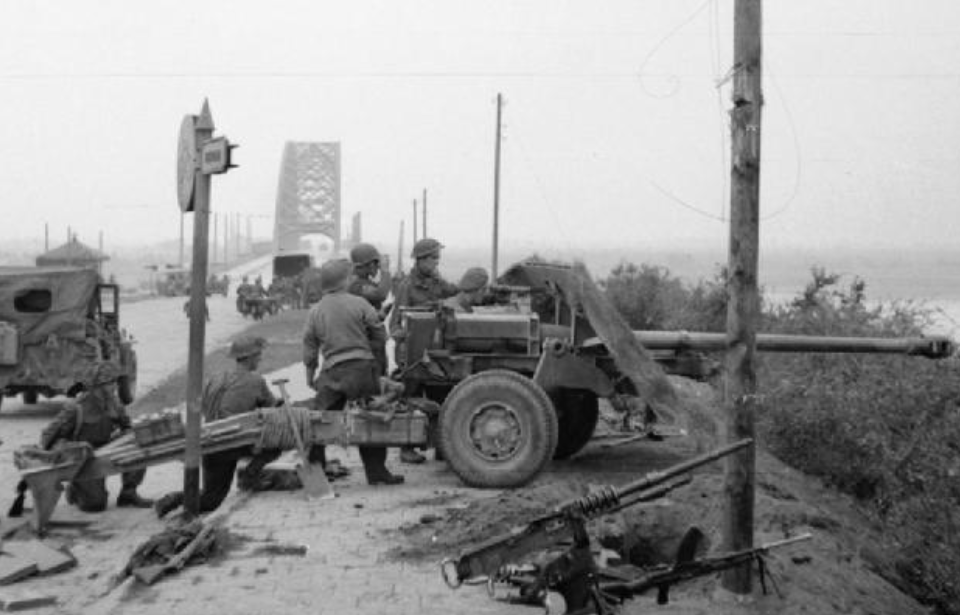It might look like a normal structure today, but the Nijmegen bridge was a pivotal strategic point throughout the entirety of the Second World War. The Germans and the Allies sought control of it, leading to one of the most daring operations of the conflict: Operation Market-Garden.
Construction of Nijmegen bridge
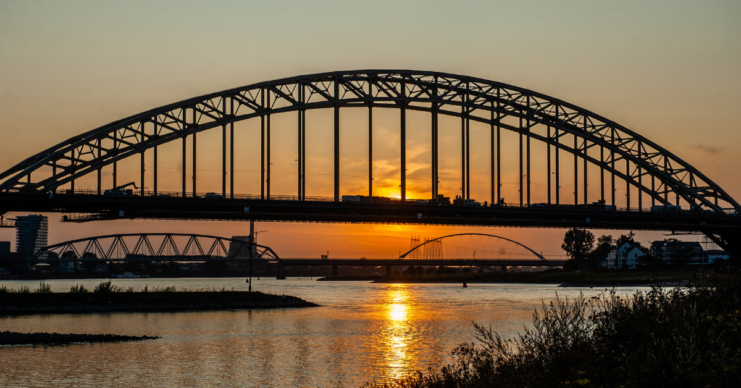
Nijmegen is a Dutch city situated on the banks of the Waal, a branch of the Rhine. The city’s name comes from the Roman word “Noviomagus,” meaning “new market,” and it’s the oldest in the Netherlands, having been established over 2,000 years ago. Nijmegen is located along a major river trade route, making it an important commercial center. Barges carry goods on the Waal, from the harbor at Rotterdam, to Germany’s Ruhr industrial area.
However, before 1936, there was no fixed roadway connection between Nijmegen and the Dutch city of Lent, situated directly across the river. Instead, there was only a railway bridge that was built in 1878.
In 1906, plans were made to start construction on a highway bridge at Nijmegen. The beginning of World War I, however, halted this work. Although the Netherlands remained neutral through the conflict, all major civic works were halted in fear that the war could potentially spill over the border.
After the end of the First World War, plans were, once again, put in place to start the project. By 1927, blueprints for the bridge were finalized and, on October 23, 1931, construction began. The bridge opened on June 16, 1936. Queen Wilhelmina presided over the ceremony.
Germany invades the Netherlands
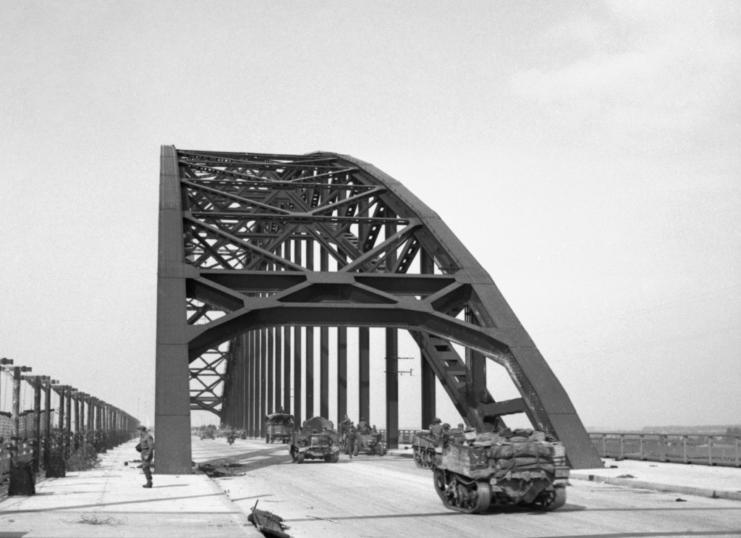
It was unfathomable that only four years the Nijmegen bridge would be destroyed. The government watched in anticipation as, in 1939, Germany invaded Poland; initially, it had hoped to remain neutral throughout the conflict, as the country had during World War I.
In 1939, with war declared between England, France and Germany, the latter government promised neutrality to the Netherlands. In reality, however, plans were being made to invade Denmark, Belgium, France and the Netherlands – the promise was a ruse to keep the Dutch from mobilizing.
The Dutch government was suspicious of the German promise of neutrality and, as a result, began mobilizing in August 1939. As part of the preparation for a potential German invasion, Dutch engineers mined key bridges within easy reach of the border. The railway and highway bridges at Nijmegen were rigged with explosives to help prevent a German invasion if it inevitably happened.
The German invasion of the Netherlands took place on May 10, 1940. Nijmegen and its two bridges were a primary objective of the Wehrmacht. If the Germans could take them, they could bring thousands of additional troops into the country, Belgium and northern France.
Knowing that the Germans’ primary objective was capturing the bridges at Nijmegen, the Dutch government decided to detonate the explosives they’d rigged. In an instant, both the railway and highway structures plunged into the Waal.
German occupation of Nijmegen
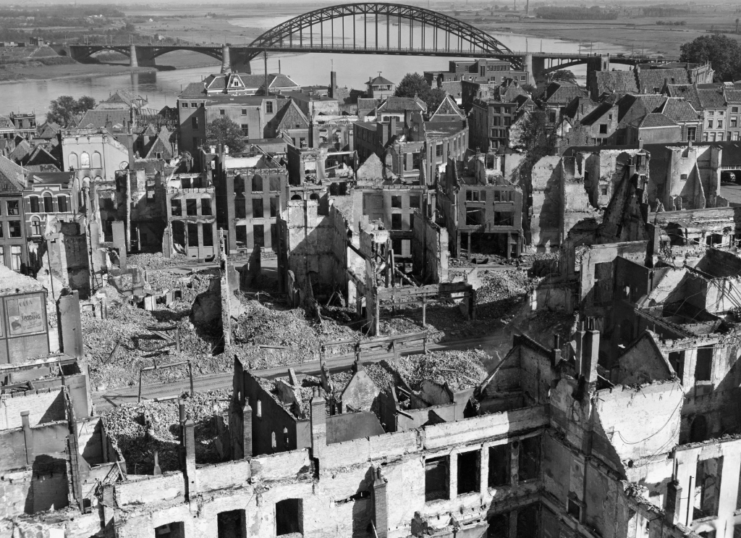
Unfortunately, this didn’t deter the Wehrmacht. The German forces crossed the Waal in assault boats and aboard a ferry that ran between Nijmegen and Lent. The former was the first Dutch city to fall, but it saw no further fighting during the 1940 campaign. The Germans ordered Dutch engineers to rebuild the bridges and, in 1943, both the railroad and highway bridges were reopened to German vehicles.
Although the bridges were essential in transporting German supplies into occupied Europe, no Allied munitions were dropped on them for nearly the entirety of World War II. In hindsight, it would have been possible for bombers to take the bridges out as they flew over the Netherlands on their way to drop bombs on Germany.
This all changed on February 22, 1944, when bombs were dropped on Nijmegen by US Army Air Force (USAAF) bombers. This was one of the largest bombardments of a Dutch city during the conflict, but, unfortunately, the campaign went horribly wrong for the citizens of Nijmegen.
The bombs dropped on the city were supposed to have been dropped over the German town of Cleves, but the pilots had become disoriented and dropped them over Nijmegen. In total, almost 800 Dutch citizens were killed when the munitions were dropped over the residential section of the town. Similarly, many historic buildings that once stood in Nijmegen were reduced to rubble.
Operation Market Garden
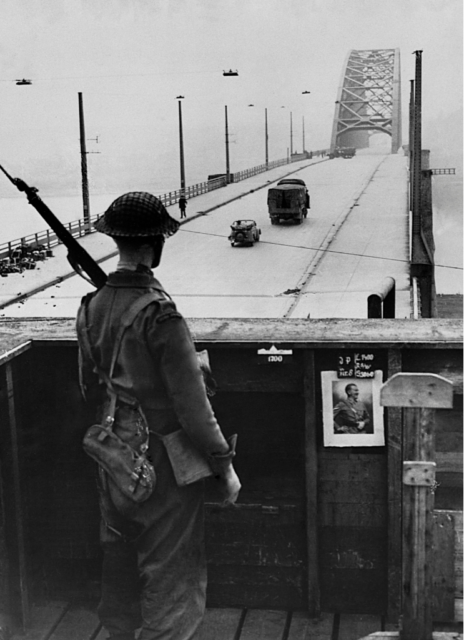
By late August 1944, an Allied liberation of the Netherlands seemed to be on the horizon – the Germans were starting to retreat from Belgium and France. By September 5, 1944 (a day remembered as “Mad Tuesday“), rumors flew around the Netherlands, saying the long-awaited Allied liberation was finally at hand. However, the German forces regrouped and were unwilling to give up the country without a fight.
Realizing the enemy wouldn’t be removed easily, Gen. Bernard Montgomery devised a plan known as Operation Market Garden. If successful, it would liberate the Netherlands and outflank the Siegfried Line, which would allow for the Allies to push into the Ruhr, Germany’s industrial heartland.
Operation Market Garden consisted of a two-pronged approach to recapture several Dutch bridges, including those at Nijmegen. “Operation Market” was the airborne component. Three Allied airborne divisions would drop into the Netherlands and seize key territory and bridges to allow the ground forces – also known as the “Operation Garden” phase – to cross the Rhine into Germany.
Battle of Nijmegen
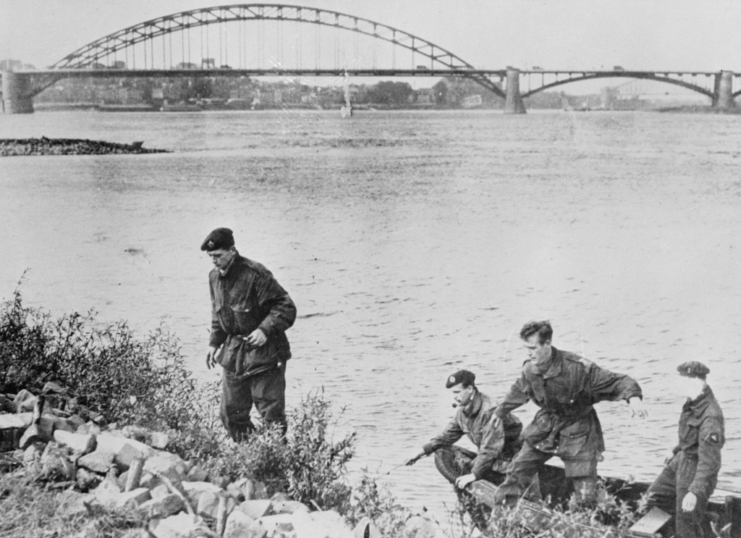
On September 17, 1944, the first attempt was made to capture the two Nijmegen bridges by units of the 82nd Airborne Division. The American forces were able to get within about 400 meters of the Waal Bridge before being thrown back by the Germans.
In the following days, two more attempts were made to capture the bridges, but these were also unsuccessful. On September 19, the ground forces of the XXX Corps were able to make contact with the airborne units in Grave. A combined attack to secure the bridges was made, but the Allied advance was, once again, halted by the Germans, who’d received reinforcements.
The Allies then altered their plan of attack, as it was becoming clear the bridges couldn’t be stormed and taken by force. They decided to attack them from both sides at the same time, which meant sending Allied forces across the Waal by boat.
Capt. Julian Cook’s 3rd Battalion, 504th Parachute Infantry Regiment was ordered to cross the Waal and capture both bridges from the northern side. They came under heavy enemy fire while crossing and, according to witness accounts, just 13 of the 26 boats that left the southern banks actually reached the northern side.
Eventually, the Allies established a beachhead on the northern bank of the Waal. From this small foothold, they were able to storm and capture the bridges and, eventually, liberate the city of Nijmegen.
A Bridge Too Far (1977)
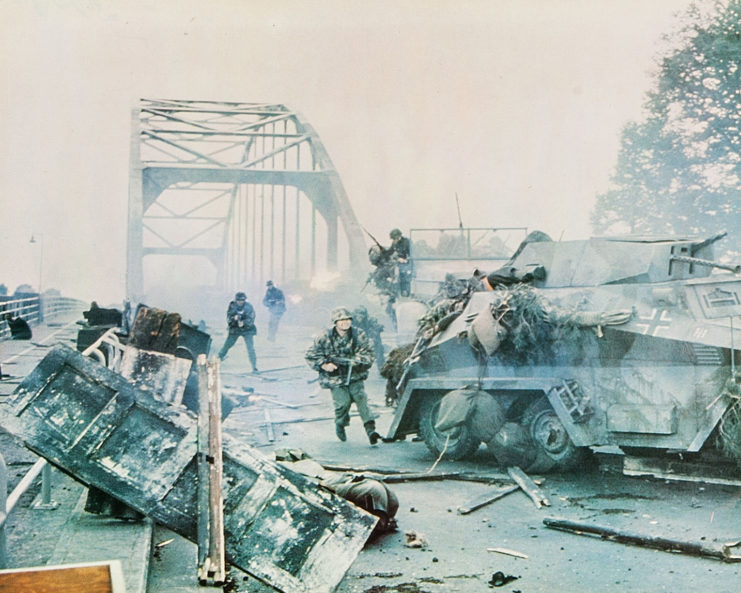
A Bridge Too Far was initially a book written by Cornelius Ryan in 1974, which gave an overview of Operation Market Garden and the failed Allied attempt to break through German lines at Arnhem. In 1977, it was made into a major Hollywood film.
More from us: Actors You May Not Have Realized Served in World War II
Want War History Online‘s content sent directly to your inbox? Sign up for our newsletter here!
A Bridge Too Far presented the events of Operation Garden Market. Its cast included major stars of the time, including Anthony Hopkins, Sean Connery, Gene Hackman, Dirk Bogarde, Michael Caine, James Cann, Robert Redford and even Laurence Olivier.
